Hey friends! This episode is a unique one because it's actually a masterclass I taught for Showit designers in their new designer hub. I recently did a video training version of this class and thought, "Hey, that was a great class. Can I share this with my podcast community too?" Showit's team said, "Heck yes!" So here we are, airing this awesome training on the podcast! Today, we are talking all about setting your pricing as a designer.
Now, I know Showit is in the title and yes, I design on Showit myself. But if you design on something else like Wix, Squarespace, Webflow, Adobe, Kajabi, WordPress, or anything else, you can totally apply what I'm teaching here to your business as well. We'll be diving into pricing, and the concepts discussed are applicable across different website platforms.
In this episode, I’m sharing:
- how to raise your prices as a designer
- setting your pricing as a designer to begin with
- why charging your worth is keeping you broke
- how to display your prices on your website,
If you want to see the slides and video version of the training, with me talking about examples in the audio, join the new Showit Designer Hub. It's a home for all designers to find design resources and community support. It's available to any designers who have an active subscription. It’s different from the Showit Facebook group you might be a part of as well. Trust me - it’s even better!
LISTEN TO THIS EPISODE NOW:
Listen & subscribe on your favorite platform: Apple Podcasts | Stitcher | Google Play | Spotify | iHeartRadio
Search for episode 233!
Are You New to Showit?
Before we dive into the main topic, let me quickly mention that if you're a designer new to using Showit and interested in trying it out, you can get a free month of your Showit subscription here. It's 30 days with no credit card required and no strings attached. Just use the code "Elizabeth" when it asks for a referral code!
Pricing is Emotional
First, let's discuss the emotional aspect of pricing. Even if we try to separate it, pricing evokes emotions. We're often told that pricing is strictly business and not tied to our self-worth. However, the truth is that it carries a strong emotional weight. This is particularly true in the early stages of our business, when everything is changing rapidly, and we're trying to establish ourselves, secure clients, and gain experience. We often hear phrases like "charge what you're worth and add tax," which can lead us to equate our personal value with our pricing numbers. It’s one of my least favorite pieces of business advice. And it’s not true. Even if you've been in business for a while, pricing can still stir up emotions, and so before we dive in I just want to say - hey! It’s normal. And it’s still emotional for me too.
Read More: 4 Questions To Ask When You’re Not Booking Clients
Pricing is Marketing
Pricing is marketing too, and in fact, it's one of my favorite things to talk about. The cost of your web design, branding, and other services is an important part of marketing your offerings. You can't discuss the inclusions, processes, and target audience without eventually addressing the price. Even in discovery calls with potential clients, where you sell them on working with you, the cost plays a significant role. It all works together as the marketing for your services. When something is considered a good deal or high value, it's because the price serves as a marketing element. That applies to pricing as a designer too!
Pricing Principle #1: Price is relative
If I ask you, is a thousand dollars a lot of money? That's a relative question. It may be a lot of money for a Starbucks pumpkin spice latte or a wreath for your front porch. But for a brand new car or your dream vacation, it's not at all. It's a steal. The perceived value of a car or vacation is different from a latte or wreath. So it's super relative.
And in addition, what's expensive for one person may not be for another. If you can effectively convey the value of your web design service to that person, and they recognize that value, then it's not too expensive for them. When someone claims something is too expensive, what they really mean is that they don't see the value in it for themselves. We need to remember that when setting our pricing as a designer.
I've had friends in the past say that something I wanted to buy was too expensive for them. However, that doesn't mean it would be too expensive for someone else (like me sometimes!). There is a market for anything at any price point. It's important to remember that you don't need everyone to view what you do as valuable. You just need your ideal clients to see the value in what you offer and not consider it to be too costly.
A few Black Fridays ago, I received an email from a random guy on my email list who clearly wasn't an ideal customer. He complained that my templates were too expensive and that he was offended to be receiving my emails. Honestly, looking back it feels kind of funny. Yeah, it probably is too expensive for him. He's not the ideal client, but that's okay. It was a good reminder that "expensive" means different things to different people, and I don't need everyone to see it..
There is no “right” price
There is no one right price that every show website or template customization or template should cost. It all depends on who your target audience is and what you're offering. While it's helpful to ask other designers about their pricing, ultimately, what they're doing doesn't matter if you're not serving the same people. Your style and approach will be different. So, there is no one right price, and designers are needed at every level to serve every client. There are people ready to pay for both expensive and inexpensive options in every category.


Pricing Principle #2: People have to be willing to pay your price or you won’t have clients
What makes someone willing to pay your price? Perceived value.
What motivates someone to pay for your services is perceiving the value they receive. If they don't find the value matching the price, they won't be willing to pay. If people aren't willing to pay your price, you won't have clients. It's your responsibility to effectively communicate the value of your design services; it can't be expected that customers will automatically recognize it.
Being a successful designer requires more than just design skills; marketing and business skills are equally important. It's unfortunate, but true. As designers, we often enjoy being behind our laptops and creating, but knowing how to market ourselves is crucial. Both design skills and marketing skills are necessary to thrive in this profession. When pricing as a designer, this comes through more than ever.
Instead of asking, “what can/should I charge for my design services”, we should be asking, “how much is this result worth to my ideal client?”. Keeping in mind you are doing something for them that they can’t do themselves. That needs to come through when setting your pricing as a designer.
One of the biggest issues I see with designers is that they are pricing too high for the stage of business they are at (and what their portfolio currently reflects) OR it’s just too high for the ideal clients that they want to work with.
The mentality of just charging what you're worth and adding tax is causing problems because it leads to high prices that potential clients are not willing to pay. This results in a lack of clients. It's unfortunate, but if you're struggling to book clients and following generic advice on pricing isn't working, consider lowering your prices for now. We'll discuss how to raise prices later. Don't blame yourself as a designer if clients aren't coming in; it could simply be that your prices are too high for your current stage or target audience.
Read More: Why You Shouldn’t “Charge What You’re Worth”
Pricing Principle #3: Your price is about economics, not your personal value
I said this many times now, but it's not about charging your worth. It's about charging what people will pay at this point in your business. So please stop worrying about “charging what you're worth”. It's bad advice that keeps people broke because you often overprice your services, resulting in no client bookings. Your worth cannot be assigned a dollar amount; it exceeds any monetary value. Thinking about it this way is not helpful. Instead, we should gradually raise prices as our skills and portfolios improve. And as I mentioned before, don’t forget that designers are needed at every price point for every client.
Pricing Principle #4: The biggest pricing changes will happen in the first few years of your business
So it's really helpful to remember that when things seem all over the place. Just like a kid, during their first few years of life, your pricing and business as a whole will experience the most dramatic shifts in those initial years. Typically, within the first three years of business is where you'll see the most change, especially with pricing as a designer. However, it doesn't mean your child stops growing or your business stops changing after three years. It just means that the biggest shifts, such as going up, going down, changing services, and altering packages, usually happen within those initial three years. Even if you're outside of that timeframe but recently went full-time or upleveled your marketing or packages, you'll likely still fall into this range. So, if you're in the early stages of business and find yourself constantly tinkering with your pricing, just know that it's very, very normal.
Now, let’s talk about pricing strategies you can implement today!


Profitable Pricing Strategy #1: Don’t pick ONE exact, specific price for your services. Do a range.
Consider using a sliding scale or price range on your website. Remember, websites are unique and not like other services. For instance, creating a quick family portrait or doing a straightforward wedding shoot follows a set timeframe and template. You charge based on what’s included and how many hours they want you there. Websites are NOT like that. Designing a sales page with a thousand words, crafted by a professional copywriter, is vastly different from a service page where the business owner struggles with their own copy. A 10-page website also differs from a 20-page website. Transferring 200 blog posts from Squarespace to Showit demands a different level of work compared to building a website for a company that's creating its first online presence.
Consider using an example like this: "Showit website design investment ranges from $5,000 to $8,000, depending on the project scope. Contact me for a custom quote or book a discovery call." Make sure to provide a link for clients to easily access the discovery call.
As designers, it's challenging to give a fixed price for every project since each one is unique. Some industries are fortunate to have standardized pricing, but that approach does not work well for designers (in my opinion).
What about offering a starting price instead?
I personally prefer range pricing over the starting at pricing as a designer because this gives you the most clarity for the potential clients. So here's an example. You could say starting at 7,000+ on your website but your potential client has NO idea how high it goes. Compare that to someone who has “$6000-$9000” on their site. Maybe both end up both charging $8,000 for the project, but by giving a range, you're helping the potential client not go into the conversation so blind (which makes them more likely to book a call!)
To add to this - we want the range to be relatively narrow. Typically anywhere from $1000 to $3000 is going to be an okay range. And I would add with that, it depends on how low it is. For example, $6000 to $9000 is a fine range but you wouldn’t want the range to be $1000 to $5000 or $10,000 to $20,000. When they arrive at the discovery call, you want them to have clear expectations knowing you're probably going to pretty closely hit on what they're thinking it's probably going to cost.
Profitable Pricing Strategy #2: Factor processing fees into your project costs
Bank processing fees are just a part of doing business and not something to try to forever avoid.
I've been there too. I remember when I used to ask people to pay me on Venmo, requesting checks or cash to avoid those processing fees. But in reality, processing fees are just a part of doing business. Eventually, you'll have to accept that cost and let your clients pay with a credit card through an invoicing system, factoring it into your charges.
Services like Stripe, Square, and PayPal don't charge you for using their platforms. Instead, they make money through a percentage of each transaction, rather than a monthly service fee. So, don't try to bypass those fees. It's more trouble for both you and your clients. Just consider it as a cost of doing business and understand that the final amount you receive from a project, say $5,000, isn't actually what you'll be left with, due to various factors, one of them being processing fees.
At the time of writing, these fees range between 2.9%-3.49% + 30 cents per transaction, which means on a $3000 project, you are “losing” anywhere from $87-$118.
You need to understand that $3,000 is not what you're taking home. Once you start calculating the true value of your services, you'll feel more confident and satisfied with your pricing. It's important to note that credit card processing fees and transaction processing fees are tax deductible too!
Read More: 5 Shifts I Made To Go From Freelancer To CEO When I Started My Business
Profitable Pricing Strategy #3: Do you actually know how long-ish a website project takes you? If not, start tracking your TIME!
So, let's continue with this thought, but for the next strategy, I want to ask you: do you actually know how long it takes you to complete a website project? Many designers are unsure because it just feels like it takes them three months or they do it in a single day (like a VIP day). And I'm not just talking about the amount of hours, but also the overall time. So, if you're not sure, start tracking your time. It’s hard to think about pricing as a designer without knowing how much time you are spending per project.
In my experience, if we don't charge hourly, we often neglect tracking our working hours, thinking we don't need to because we don't charge by the hour. But actually, it's important when it comes to pricing to ensure that as a business owner, you are getting a good hourly rate for your projects. And that's what you should be focusing on – not what others are doing for their pricing, but what works best for your life and the amount of time you spend per project.
Personally, I use an app called Toggl, and there's both a paid and a free version available. I use the free desktop version, which you can access through the website or by downloading the app. I simply keep it open in a browser window while I'm working and use it to track my time, even for non-client work. I highly recommend doing it for client projects too. Then, you can clock in and out for specific tasks, like working on branding, attending meetings, miscellaneous work, or working on the website. This way, at the end of the project or week, you can see how many hours you spent on a client and analyze if the time spent was necessary. Asking these questions will help you gain insights, especially when you reach the end of the project and want to evaluate how long it took you (and if all those meetings were really necessary!).
Profitable Pricing Strategy #4: Raise your prices deliberately over time as your portfolio grows and your skills increase.
A common mistake I see designers make is spending too much time on marketing and then booking out for six months in advance. When you finally start a project in the fifth month, you’ll find that your rates are lower than they should be. During those previous months, your portfolio improved, skills increased, and systems sharpened, making you a better designer. In reality, the person who booked you for the fifth project should have paid a bit more, considering your growth. However, when you constantly keep the same price for every client booking months in advance, this won't happen.
I recommend raising your range of price slightly after 1-2 projects are booked, ESPECIALLY if the next project you’re booking for is a few months away. Not projects finished, BOOKED. Raise your prices even $100-$300. Small incremental shifts will ultimately make a big difference.
If you're fully booked and every discovery call ends with an enthusiastic "heck yes, great deal," it may be time to consider raising your prices. It's important to have potential clients who find it a stretch and say, "I love your work, but it's too expensive for me right now." It should not be an easy yes for everyone (or you probably aren’t charging enough).


Want to go deeper on pricing? Join me inside Booked Out Designer!
I just wanted to mention that if you're interested in learning more about pricing as a designer, I have a dedicated module in Booked Out Designer that covers this topic in depth. In today's presentation, I really only scratched the surface. The course itself consists of 90 lessons, and you have the flexibility to jump around and focus on what you need. There are various topics covered, including discovery calls, running client projects effectively, utilizing templates for click up, and even accessing an attorney-drafted brand and website design contract. Additionally, the course covers aspects of business finances, marketing strategies, social media, and much more.
You'll have lifetime access to the course, along with an active community and monthly coaching calls. Feel free to ask me anything related to your business or mine in our engaging Facebook group. I’d love to see you there!
Before you go - are you in the Breakthrough Brand All Access Facebook Group yet? It’s free to join, and it’s where we take conversations like this one about setting your pricing as a designer and go even deeper. Pop in and ask questions, share insights, and even peek behind the scenes of my own business and what I’m trying lately. I would LOVE for you to join!
Links Mentioned:
Join me inside Booked Out Designer
Join the New Showit Designer Hub
Shop All of My Showit Website Templates (use code BBPODCAST for 10% off!)
Sign up for a free Showit trial and get a month free
Join my FREE Breakthrough Brand All Access Facebook Group
Connect with Elizabeth on Instagram
September 19, 2023

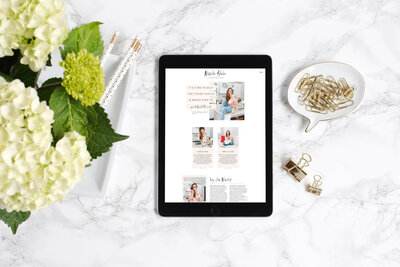
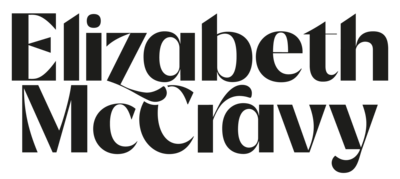

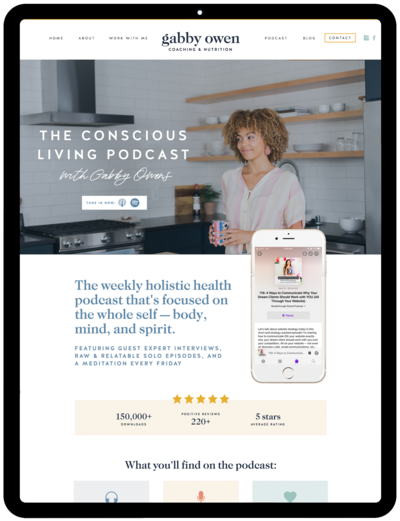
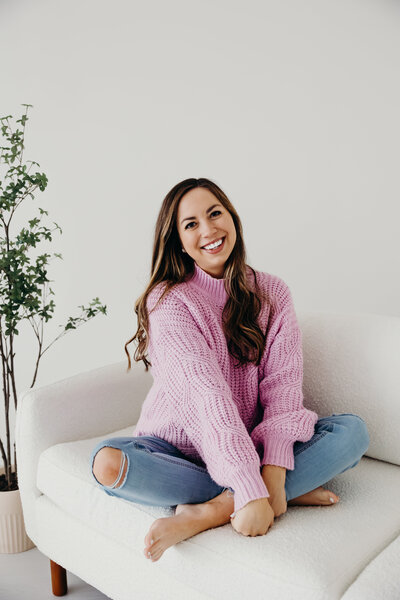
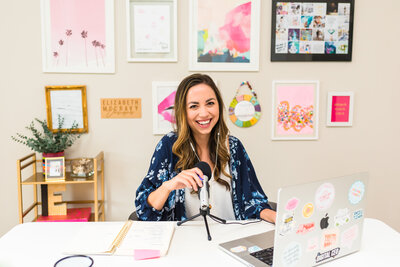










read comments or leave a comment...